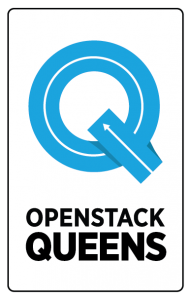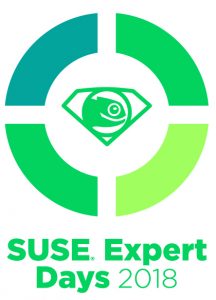A New Face at SUSE
As a relative newcomer to SUSE, it’s a pleasure to be writing my first blog to introduce myself, and to look at the recent OpenStack Queens release.
Although I’ve only been with SUSE for just over a month now, I’ve been working in the as-a-Service and Cloud world for over twenty years (yes, I don’t look anywhere near old enough to have been doing that, thank you for saying!). My most recent roles were at Rackspace, where I spent 11 years, and a shorter stint more recently at CenturyLink, which gave me more insight into the world of telcos and software-defined networking. If you’ve peeked at my Twitter feed, you’ll have noticed a few tweets about OpenStack appearing recently in between posts about beer, Movember (a charity that I have supported for more than 12 years now), cloud computing and cyber security. You can expect to see plenty more tweets about all of these topics (and more) in the coming months.
I received my introduction to OpenStack at Rackspace when they announced the project with NASA in 2010. While the concept of open source wasn’t new by any stretch of the imagination, the release was still met with a degree of scepticism from some quarters. Who would have known that this amalgamation of the code behind NASA’s cloud server product and Rackspace’s cloud storage offering would become one of the most successful open source communities? I loved the concept of an open source cloud operating system that had developers and companies all over the world collaborating on and improving the code together, and am very excited to be immersing myself back into the world of OpenStack, particularly working for a well-established and fun-loving company like SUSE.
OpenStack Queens
The Queens OpenStack release is named after the Queens Park suburb in Sydney Australia. Why Queen Park, I hear you question. Allow me to explain – the naming of a release is always taken from a geographic location corresponding to the location of the summit associated with a release. There are quite a complex set of rules governing this, but you can read more about it on the OpenStack site. Queens is the 17th iteration of the OpenStack code, and brings lots of new functionality that will help businesses looking to invest in technologies like containers, network function virtualization (more catchily known as NFV), edge computing and machine learning.
SUSE OpenStack Cloud v8
I’m currently working with the rest of the team at SUSE on version 8 of the SUSE OpenStack Cloud, which we will be announcing before the Vancouver OpenStack Summit in May. Watch this space and my Twitter feed for more on that coming soon. I’ll also be at the OpenStack Summit in Vancouver, so if you’re there, please come along to the SUSE booth and introduce yourself. I’m looking forward to meeting lots of interesting people there, and renewing old acquaintances from the OpenStack world.
 SUSE Expert Days
SUSE Expert Days
Before then, we have the SUSE Expert Days taking place around the world – the London date is the 24th of April. These are a great opportunity to meet some of the local SUSE team as well as your peers. There’s also opportunities to watch demonstrations and presentations, to take part in technical discussions and to meet others working in the open source community in your region. I’ll be attending the London event, and hope to see some of you there.
Related Articles
May 03rd, 2023
Hybrid Boot and SEV-SNP support in AWS EC2
Feb 27th, 2024
What is Public Cloud Computing and How Does It Work?
Feb 27th, 2024
What is a Cloud Migration Strategy? An In-Depth Analysis
Mar 05th, 2024
No comments yet